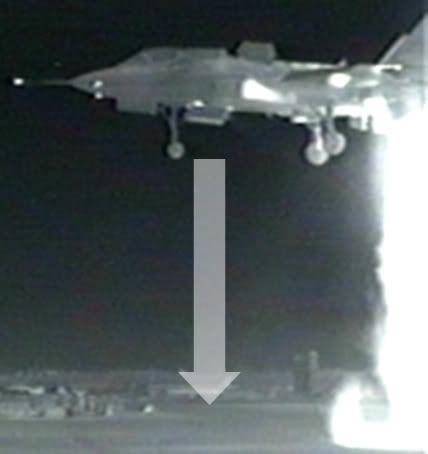F35B v/s SHar landing
Thread Starter
F35B v/s SHar landing
Just watched the first video of the Spams landing the F35B on-board the USS Wasp.
Seemed there was a huge amount of spray kicked up from the water.
I note that the ship wasn't moving, and it was a relatively flat sea.
Are there any SHar drivers who can offer an insight into the vertical thrust of the F35B versus that of the Harrier - I can't remember seeing that amount of spray thrown up from the surface of the water in videos of Harriers landing at sea.
I remember there was some concern about whether the F35B would damage deck surface etc.
Seemed there was a huge amount of spray kicked up from the water.
I note that the ship wasn't moving, and it was a relatively flat sea.
Are there any SHar drivers who can offer an insight into the vertical thrust of the F35B versus that of the Harrier - I can't remember seeing that amount of spray thrown up from the surface of the water in videos of Harriers landing at sea.
I remember there was some concern about whether the F35B would damage deck surface etc.
I suspect it'll certainly point out any deficiencies in the surface preparations of the Deck department... but with the ship sitting still the amount of spray isn't all that striking.
It could well have been an especially warm day, too.
It could well have been an especially warm day, too.
Do a Hover - it avoids G
Join Date: Oct 1999
Location: Chichester West Sussex UK
Age: 91
Posts: 2,206
Likes: 0
Received 0 Likes
on
0 Posts
For a hovering jet lift aircraft to experience deck edge effects (earlier post now removed) it would have to be low enough to be flying in ground effect when over the deck – likely to be less than (I’m guessing) 12 ft for this class of exhaust. With the Harrier you needed to be less than 8 ft wheel clearance to experience handling issues because of ground effect.
I have to wonder about - and I'm sure there have been test done regarding - the potential for sudden power loss due to recirculation, especially in confined areas. Am I overthinking that? Was that ever a concern in the Harrier?
Do a Hover - it avoids G
Join Date: Oct 1999
Location: Chichester West Sussex UK
Age: 91
Posts: 2,206
Likes: 0
Received 0 Likes
on
0 Posts
The potential for a sudden power loss due to recirculation is present with any jet engine although only those used for jet VSTOL applications are seriously at risk. Thus for any powered lift design to be successful it must - by design – arrange some way of keeping the hot exhaust gases out of the intakes. Both the Harrier and the F-35 designs achieve this by having more thrust come out of the front relatively cold nozzle(s) than out of the rear hot ones. Then when the front exhaust hits the ground and spreads radially in all directions the part that goes rearwards stops the hot component coming forward dead in its tracks as shown in this infra red pic where hot is white. (I have added an arrow to show where the cool front fan exhaust is coming down)

Dealing with so called "far field" recirculation from the "walls" of any restricted site is another matter and not so much an aircraft design issue as an operational one that is dealt with through appropriate site selection and flying techniques. This can affect choppers as well as fixed wing.

Dealing with so called "far field" recirculation from the "walls" of any restricted site is another matter and not so much an aircraft design issue as an operational one that is dealt with through appropriate site selection and flying techniques. This can affect choppers as well as fixed wing.
Thanks for that, John - I've dealt with recirc issues in helos over the years, but it only dawned on me this morning over coffee that such a phenomenon presented risks in the VTOL community as well. Excellent post.
Join Date: Jan 2001
Location: Home
Posts: 3,399
Likes: 0
Received 0 Likes
on
0 Posts
Recirculation in rotary is not concerned with ingesting exhaust gasses into the however, rather it is concerned with downward rotating airflow reducing the available lift from the rotors.
ie it is suspected to have caused the loss of the sneaky helicopter in the Bin Laden raid. Supposedly they practised in a mock up of the compound with chain link fences to represent the compound wall. The real wall caused recirculation.
ie it is suspected to have caused the loss of the sneaky helicopter in the Bin Laden raid. Supposedly they practised in a mock up of the compound with chain link fences to represent the compound wall. The real wall caused recirculation.




